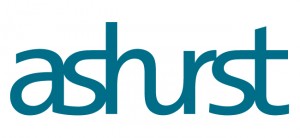6 August, 2019
Introduction
Recent problems relating to backdoor listings and shell activities have attracted scrutiny from regulators. Backdoor listings refer to arrangements listing assets, which may be of lower quality or involve suitability issues, whilst circumventing the usual requirements that apply to a new listing applicant. Backdoor listings often involve shell companies. These companies often have minimal business operations, but are valuable due to their listing status, as they may be used to list assets. Shell company activities may lead to market manipulation, which undermines investor confidence.
In this connection, in late July 2019, the Stock Exchange published its consultation conclusions on backdoor listings (Consultation Conclusions), which tighten the Listing Rules on reverse takeovers and other matters. The revised Listing Rules take effect on 1 October 2019.
The SFC also published a statement around the same time the Consultation Conclusions were released. The statement highlights how backdoor listings are often achieved and common shell company activities. The statement sets out factors the SFC would take into account in deciding whether to exercise its statutory powers. In particular, the SFC has the power to object to listing applications and may direct the Stock Exchange to suspend trading of shares if necessary.
Materials published by the Hong Kong Stock Exchange
The Stock Exchange published the Consultation Conclusions and the following guidance materials on the same day:
- guidance letter GL104-19 (guidance on application of the reverse takeover rules), which will replace GL78-14 (guidance on application of the reverse takeover requirements);
- guidance letter GL105-19 (guidance on large scale issues of securities), which will replace GL84-15(guidance on cash company rules);
- guidance letter GL106-19 (guidance on sufficiency of operations); and
- frequently asked question FAQ 057-2019, relating to notifiable transaction requirements relating to securities transactions.
The amendments to the Listing Rules and the new guidance materials mentioned above all take effect on 1 October 2019. Transitional arrangements apply to certain matters.
Summary of the revised Listing Rules
Set out below is a summary of the revised Listing Rules and guidance letters on reverse takeovers and related matters.
Reverse takeovers (principle based test)
Under the principle based test in the reverse takeover rules, the Stock Exchange will consider whether an acquisition (or series of acquisitions) constitute an attempt to list the acquisition targets by circumventing the rules on new listing requirements.
The six assessment factors which the Stock Exchange will have regard to, set out in guidance letter GL78-14, will be codified into the Listing Rules.
Four of the factors will remain the same. These four factors are:
- the transaction size relative to the size of the issuer;
- any fundamental change in the issuer's principal business;
- the nature and scale of the issuer's business before the transaction; and
- the quality of the acquisition targets.
The following two factors have been modified under the revised Listing Rules:
- the current factor relating to "issue of restricted convertible securities" will be extended to include any change in control or de facto control of the issuer. Factors which will be taken into account include (i) any change in the controlling shareholder of the issuer, or (ii) any change in the single largest substantial shareholder who is able to exercise effective control over the issuer as indicated by certain specified factors; and
- the current factor relating to "series of transactions / arrangements" will be clarified to cover transactions / arrangements made within a 36 month period or are otherwise related. Guidance letter GL104-19 makes it clear that the reverse takeover rules may still apply to transactions outside the 36 month period, or apply to completed transactions.
Reverse takeovers (bright line tests)
The bright line tests in the reverse takeover rules will be retained, but the aggregation period in the bright line tests will be extended
from 24 months to 36 months (to align with the principle based test).
Disposal restriction
The disposal restriction discourages an issuer from disposing its original business after the acquisition of the target with a view to circumventing the reverse takeover requirements.
The existing disposal restriction will be retained, but the Listing Rules will be modified to restrict any disposals or distribution in specie (or series of disposals / distributions) of all or a material part of the issuer's business at the time of or within 36 months after a change in control / de facto control.
Large scale issue of securities
Under the revised Listing Rules, if an issuer proposes a large scale issue of securities for cash which will result in a change of control (or de facto control) of the issuer, and the proceeds are used to acquire / develop a new business to circumvent new listing requirements, the Stock Exchange may refuse to grant listing approval for the shares to be issued. This is a codification of the practice set out in guidance letter GL84-15.
New guidance letter GL105-19 emphasises that this rule is a purposive test, and is based on all relevant facts and circumstances of the issuer. In particular, it acknowledges that certain issuers are engaged in asset-light businesses (such as technology companies), and these issuers may have a high cash to asset ratio after fundraising activities. The Exchange will consider all relevant factors when determining whether a proposed fundraising is an attempt to circumvent new listing requirements, and its assessment is not simply an analysis of the cash to asset ratio of the issuer.
Extreme transactions
The current "extreme VSA" requirements under guidance letter GL78-14 (including the current practice of requiring enhanced disclosure and appointment of a financial adviser to conduct due diligence on the target) will be codified and renamed as "extreme transactions". However, issuers will need to satisfy new additional requirements before they can make use of the "extreme transaction" category:
- the issuer must operate a principal business of a substantial size (under guidance letter GL104-19, this may include issuers with annual revenue or total asset value of HK$1 billion or more); and
- the issuer must have been under the control or de facto control of the same person for a long period (normally not less than 36 months) and the transaction will not result in a change of control / de facto control of the issuer.
New requirements for reverse takeovers and extreme transactions
Under the revised Listing Rules, the target in a reverse takeover or extreme transaction will need to satisfy Listing Rule 8.04 (suitability for listing) and Listing Rule 8.05 (financial tests for listing). The enlarged group must satisfy the requirements set out in Chapter 8 of the Listing Rules (except Listing Rule 8.05).
If a reverse takeover is proposed by an issuer that has failed to comply with Listing Rule 13.24 (see below), the acquisition target must also satisfy Listing Rule 8.07 (adequate market for securities to be listed).
Listing Rule 13.24 (sufficient operations)
This Listing Rule will be amended to require an issuer to carry out a business with a sufficient level of operations and assets of sufficient value to support its operations to warrant its continued listing (and not sufficient operations or assets, as required under the current Listing Rules).
Proprietary securities trading and/or investment in securities by an issuer’s group (other than an investment company listed under Chapter 21) are normally excluded when considering whether the issuer can meet Listing Rule 13.24. This rule will not normally apply to trading / investment activities carried out by a member of an issuer's group that is a banking company, an insurance company, or a securities house that is engaged in regulated activities under the Securities and Futures Ordinance.
New guidance letter GL106-19 provides additional guidance on this revised Listing Rule. In particular, it provides examples of issuers with minimal operations, issuers with a business of no substance (and highlights concerns regarding money lending and indent trading businesses), and how this Listing Rule applies to shell activities.
Listing Rules 14.82 and 14.83 (cash companies)
Issuers whose assets consist wholly or substantially of cash / short-term investments will not be regarded as suitable for listing. The definition of "short-term investments" will be expanded to include any listed securities that are held for investment or trading purposes and investments in other financial instruments that are readily convertible into cash.
The exemption to this rule will be tightened to only apply to members of an issuer group that is a banking company, an insurance company, or a securities house.
Transitional arrangements
A transitional period of 12 months from the effective date (i.e. 1 October 2019) will apply to issuers who do not comply with the revised Listing Rules 13.24 or 14.82 as a result of the amendments to the Listing Rules.
For the avoidance of doubt, the transitional arrangements do not apply to issuers who (i) do not comply with the current Listing Rules 13.24 or 14.82; or (ii) become non-compliant with the revised Listing Rules 13.24 or 14.82 after the effective date.
Conclusions
The revised Listing Rules are a positive development, as the more stringent rules on reverse takeovers and other matters should stem the tide of backdoor listings and improve the regulation of shell activities.
For further information, please contact:
Frank Bi, Partner, Ashurst
frank.bi@ashurst.com





